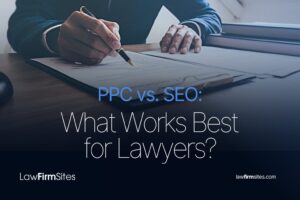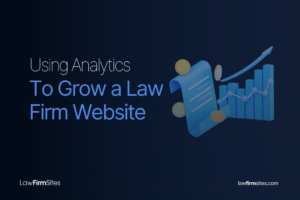Accessibility in Law Firm Web Design

Accessibility is no longer a nice‑to‑have in legal marketing and is a requirement for reaching real clients and meeting civil rights obligations online. An accessible law firm website lets every visitor, including people with disabilities, read content, fill out forms, and request services without barriers. Beyond ethics and law, accessibility strengthens user experience, which boosts engagement and conversions. If done well, it also aligns with modern SEO signals and builds trust in your brand.
What is accessibility in web design?
Accessibility in web design means building content, structure, and interactions so that people with disabilities can use your site with ease. That includes clients who rely on screen readers, keyboard input, captions, transcripts, magnification, or high‑contrast modes. In marketing terms, accessibility widens your addressable audience and reduces friction across the client journey, as visitors can find answers, evaluate your attorneys, and start intake without getting stuck. The Americans with Disabilities Act (ADA) applies to businesses open to the public, and federal guidance makes clear that websites should be accessible, with the Web Content Accessibility Guidelines (WCAG) serving as the common benchmark referenced by agencies and courts.
ADA compliance for websites
While the ADA does not spell out a single technical checklist for private businesses, the Department of Justice has repeatedly affirmed that the ADA covers web content for businesses that serve the public. For state and local governments, a 2024 final rule explicitly adopts WCAG 2.1 Level AA for websites and mobile apps, with phased compliance dates. Even though private law firms fall under Title III (under public accommodations) rather than Title II (under government), enforcement actions, settlements, and major court decisions have pointed to WCAG as the practical standard for accessible design. In short: if your legal site aligns with WCAG 2.1/2.2 at Level AA, you are following the benchmark most often used in audits, demand letters, and litigation.
The business case is just as compelling. People with disabilities represent a large segment of the population and are often active legal consumers. For law firms, this means better access to potential clients who need clear intake forms, understandable fee pages, and accessible content about practice areas. It also reduces legal risk by addressing known barriers proactively rather than after a complaint.
The impact of accessibility on marketing and SEO
Accessibility supports the same outcomes your marketing and SEO campaigns aim to achieve: visibility, engagement, and conversions.
Higher reach and reputation
Accessibility aligns your brand with inclusion and professionalism. Marketing performance improves when more people can complete key actions such as booking a consultation, calling your office, or downloading a resource.
Better content discovery
Descriptive alt text, meaningful link text, and structured headings help assistive technologies and also help search engines understand page context. Clear information architecture and logical headings keep users oriented and aid crawling.
Stronger page experience signals
Google’s guidance encourages site owners to deliver a good page experience, which includes mobile usability and Core Web Vitals. Fast, stable pages with predictable focus behavior and readable typography lead to lower bounce rates and higher conversions, which are outcomes that broadly support SEO goals.
More video and image visibility
Captions, transcripts, and alt text make multimedia usable for more people and unlock additional entry points from image and video search results.
Accessibility is NOT a gimmick. It is a durable way to improve usability, reduce abandonment, and reinforce the trust signals that lead clients to choose your firm.
Accessibility essentials for legal content
First, for legal content, keep accessibility front and center, and in attorney bios, use structured headings, real text rather than images, and a clear focus order for tabs or accordions so all users can move through details efficiently. On practice pages, open with a concise summary of key services and expand with scannable subheadings, while providing descriptive alt text for any infographics and charts.
As for the intake forms, include progress indicators, enable autosave where possible, and display clear error summaries; pair every field with a persistent label and group related questions to reduce confusion. Lastly, for maps and directions, add text alternatives that describe routes step by step and make sure embedded maps do not block keyboard users.
ADA compliance and risk management
Lawsuits and demand letters citing inaccessible websites remain common. Many complaints reference WCAG failures such as missing alt text, low contrast, empty links, broken keyboard paths, and forms without labels. Adopting WCAG practices and documenting your efforts shows due diligence and reduces exposure. Pair that with internal training for your marketing team so new content does not reintroduce barriers.
Improve website accessibility with the right resources
Accessibility is a legal obligation and a marketing advantage for modern law firms. By aligning your website with WCAG 2.1/2.2 and the ADA’s expectations, you unlock better usability, stronger page experience signals, and broader reach to potential clients. If you need guidance on audits, fixes, or workflows, explore resources and frameworks that legal marketers trust. Law Firm Sites has viable resources that can support your law firm website accessibility goals.
Did you like this post? Here are some others you might enjoy:

For most law firms, growth depends on being visible at the exact moment a potential client searches for help. Pay‑per‑click…

Strong legal marketing rewards depth. When potential clients face high-stakes decisions, they search for thorough, trustworthy guidance that clearly explains…

Data is the most reliable guide for growing a law firm website because it shows what clients actually search, where…

